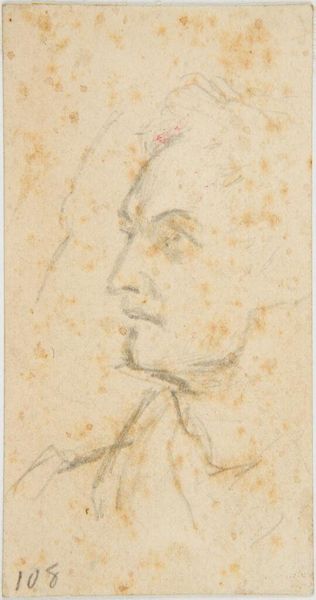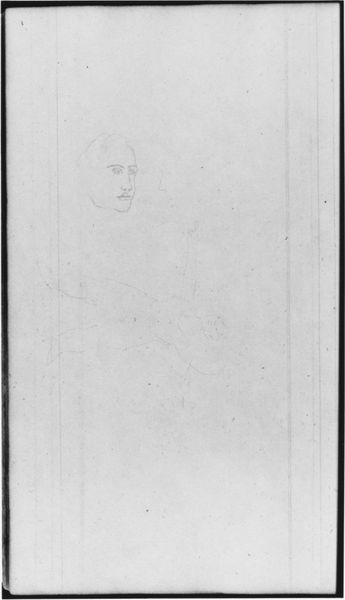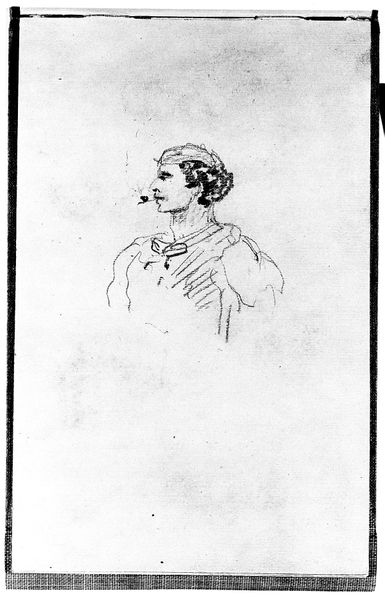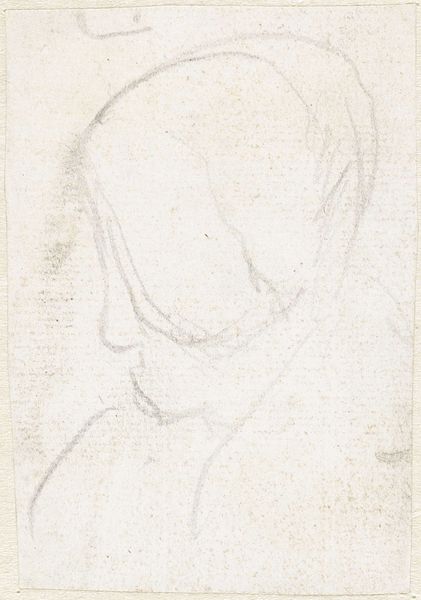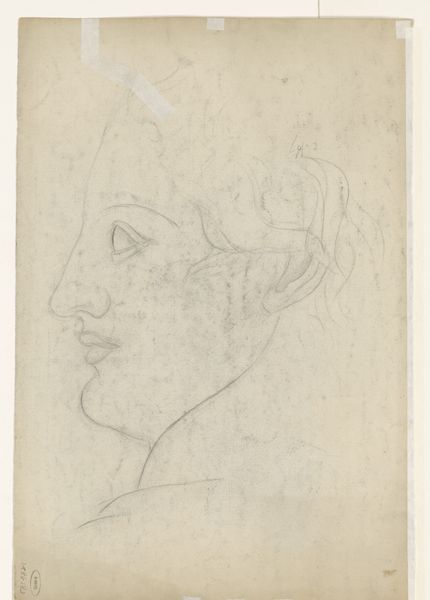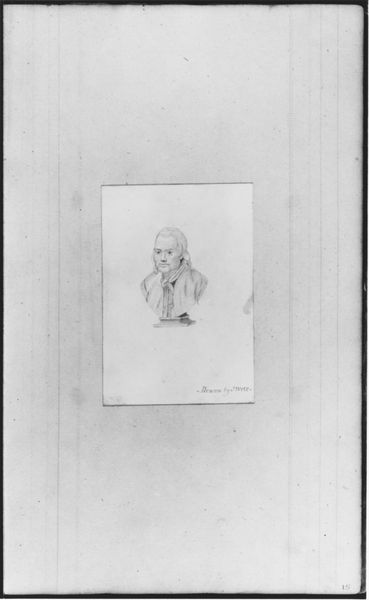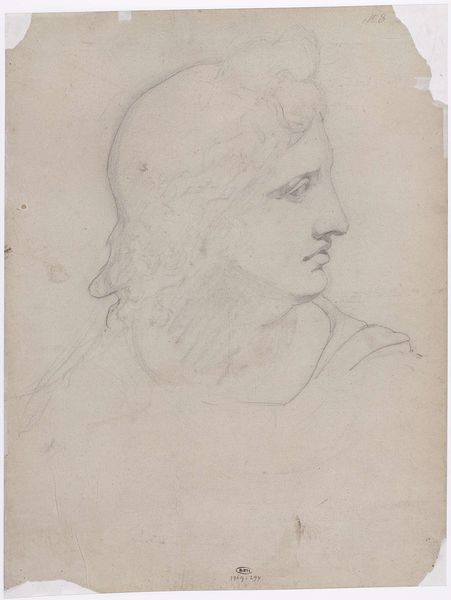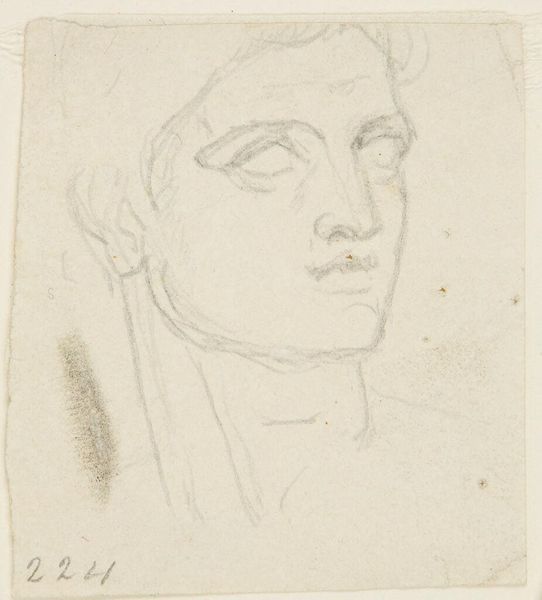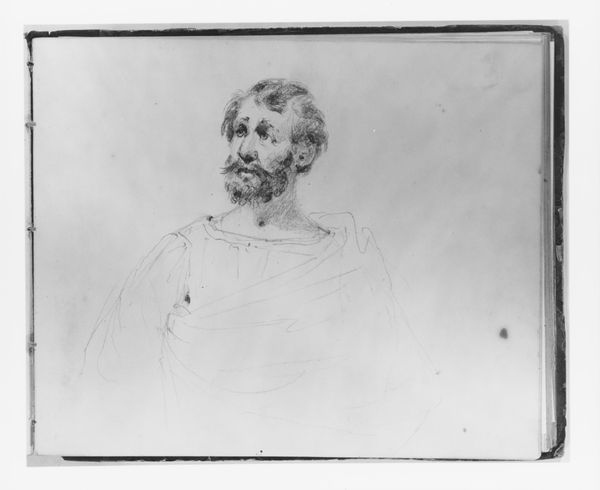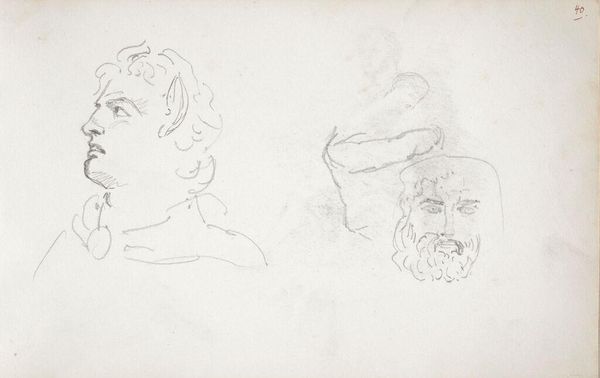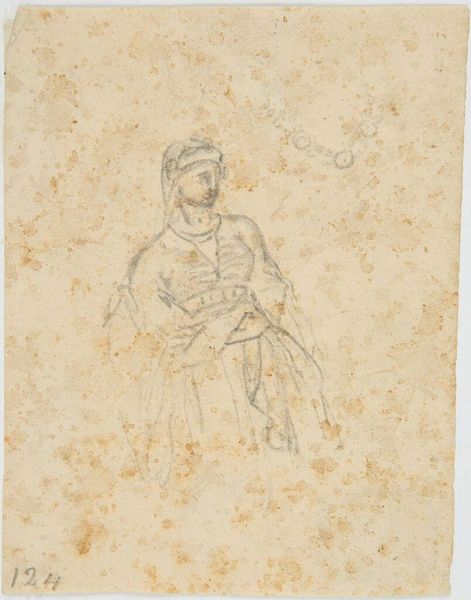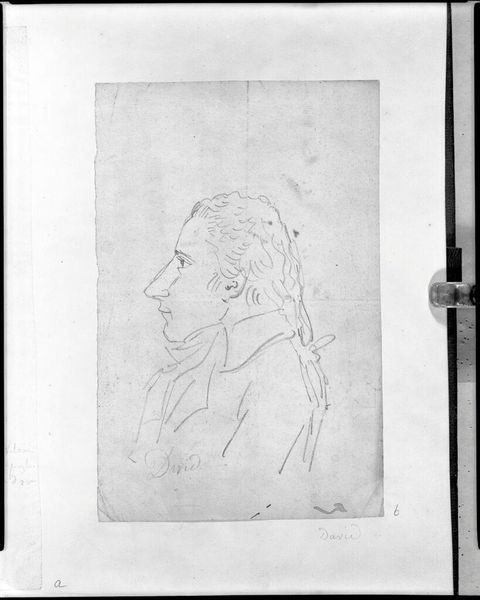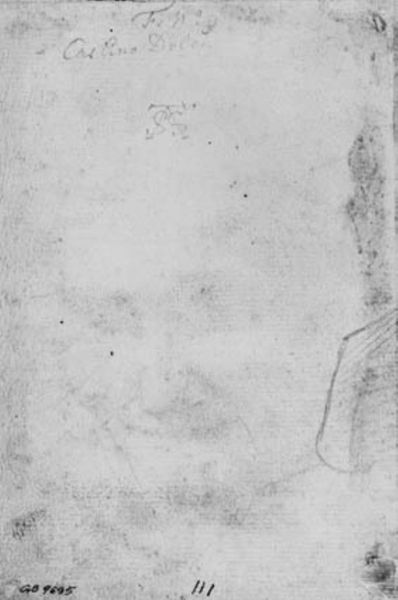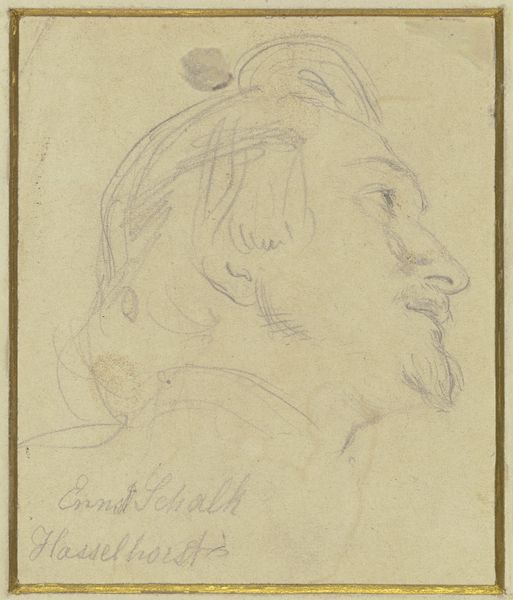
drawing, pencil
#
portrait
#
drawing
#
pencil sketch
#
charcoal drawing
#
figuration
#
sketch
#
pencil
#
academic-art
Dimensions: 8 15/16 x 6 7/8 in. (22.7 x 17.5 cm)
Copyright: Public Domain
Editor: Here we have Henry Brent’s "Head of a Man," likely from between 1811 and 1880, a delicate pencil sketch now housed at the Met. There's a fragility to the lines that makes me think of fleeting thoughts. What strikes you when you look at it? Curator: It’s interesting you say that. I'm drawn to the power dynamics embedded within portraiture of this era. Who had access to representation, and what did it signify? This sketch, even in its apparent simplicity, hints at social hierarchies. Was this man someone of note, whose image warranted preservation? Or was he part of an exercise, devoid of identity? Editor: That's a great point. I hadn't considered who was being represented, and why. It looks like it's from a scrapbook... Was sketching from life a common practice then, a form of visual note-taking for the elite, perhaps? Curator: Precisely. And what about the artist's gaze? How does it impact the representation? There’s a detachment here, wouldn't you agree? It feels observational rather than intimate, making the subject seem almost like an object of study. This objectification then becomes an interesting point of entry to thinking about masculinity and representation. What is being said, or unsaid, through the depiction of this man? Editor: I see what you mean. There's a formality, a sense of distance. So even a quick sketch can reveal complex social and political relationships. Curator: Absolutely. By questioning the context and the gaze, we uncover the silent dialogues embedded within even seemingly simple portraits, challenging our understanding of both art and society. Editor: It’s amazing how much can be gleaned from such a minimal drawing when we think about the broader implications. Curator: Indeed. And this opens up a wider conversation around visibility and agency, both in the 19th century and today.
Comments
No comments
Be the first to comment and join the conversation on the ultimate creative platform.
